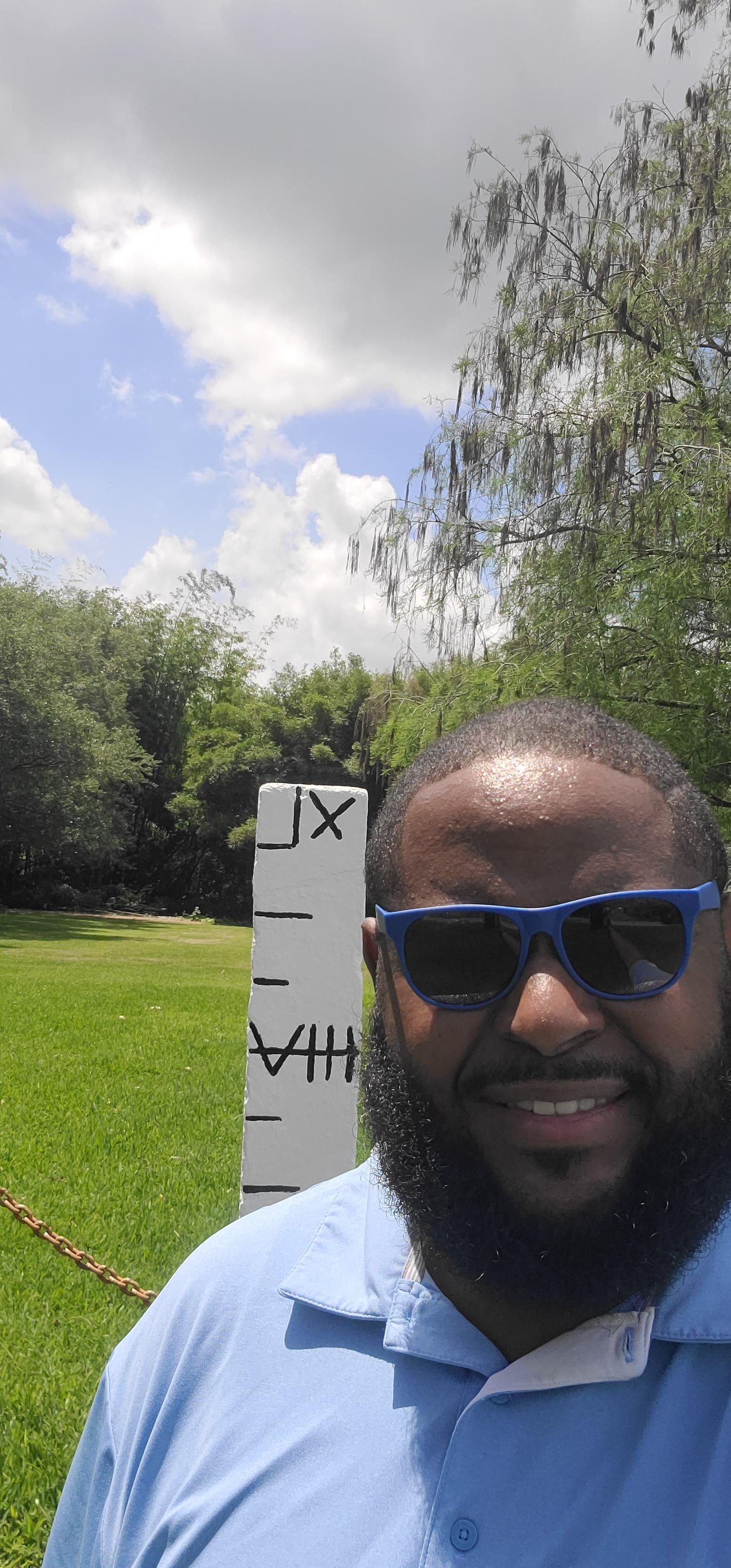Here is Marckley Etienne, PE completing an inspection at a UF facility in Belle Glade, FL. It’s also a great spot to see SOIL SUBSIDENCE! The organic soils (Histosols) of the everglades agricultural area (EAA) formed over thousands and thousands of years. The flooded sawgrass prairies south of Lake Okeechobee flourished and due to the high water, the organic matter production exceeded decomposition and so feet and feet of organic matter accumulated. In the early 1900s, farming came to the EAA and they drained the area to dry the soils. Drying organic soil allows it to decompose resulting in a loss of soil and lowering of the surface elevation; subsidence. The soil is literally being converted to CO2 and evaporating.
In 1924, this 9 foot concrete post with depth markings on it was driven down to the underlying limerock at the UF/IFAS Everglades Research and Education Center (EREC) in Belle Glade, Florida. In 1924, the top of the post was level with the soil surface. From 1924 to 1967 the soil subsided 48 inches (approx. 1.12 in/yr). From 1967 to 2009 the soil subsided 23 inches (approx. 0.55 in/yr). From 2010 to 2019 the subsidence was 2.5 inches for a subsidence rate of 0.25 in/yr. There are many other issues associated with subsidence and you can see the IFAS website for more information.
https://edis.ifas.ufl.edu/publication/SS523



